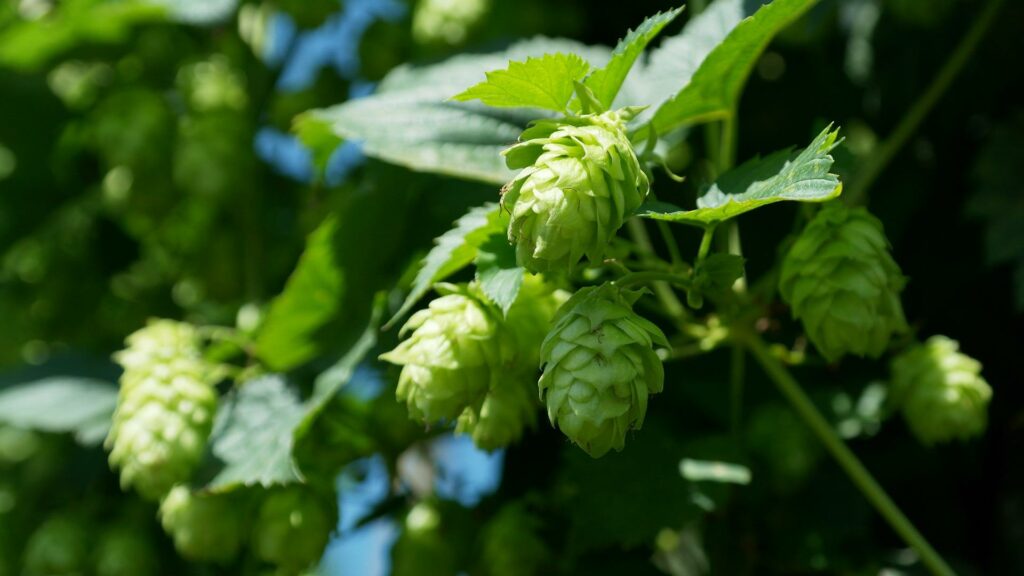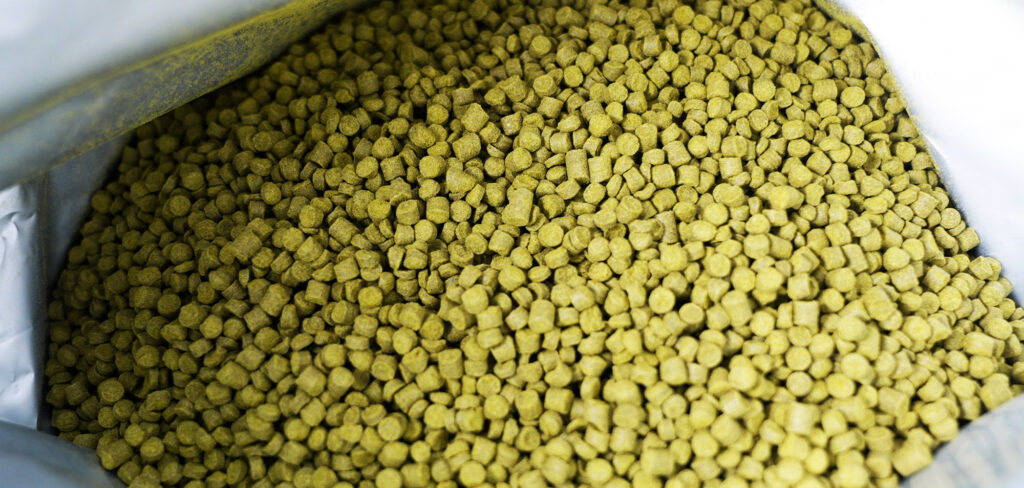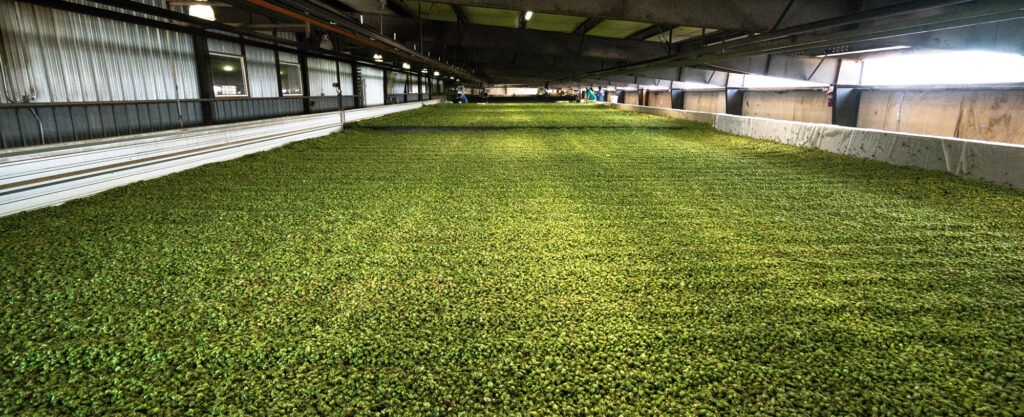By Matthew Curtis

The Future of hops. There’s a tangible sense of joy when adding hops to a freshly brewed batch of wort. Take, for example, the lively fizz of Simcoe pellets, exploding with mango and pine resin aromas as they hit the boiling mixture; the subtle berry fruit and white pepper spice of fresh, whole leaf Fuggles; the herbaceous snap of noble Tettnang, instantly making the mouth water as you ponder the crisp, refreshing quality it will impart on the beer it is yet to become.
In my debut piece for Geterbrewed I’d like to focus on the developments happening within the world of hops. More specifically, I’m going to focus on how access to new varieties, and “advanced hop products,” is driving innovation within the brewing community.
The future of hops.
Whether brewing professionally, or at home, the technological developments available to budding beer makers have come on in leaps and bounds. From technology such as hop rockets, to the still unknown-quantity that is biotransformation, modern brewers have more at their fingertips than ever before when it comes to hop additions.
Meanwhile, homebrewers now have access to an incredible range of equipment, from high quality brewing kettles, to all-important airtight (and in some cases temperature-controlled) fermentation vessels. Crucially, they also have access to many of the same ingredients as professional brewers. This includes all-grain malt produced by the world’s best maltsters, yeast from the same labs commercial breweries get their own pitches from, and the latest, most vibrant, and expressive hop varieties from all over the world.
Because of this, professional brewers are able to make more vibrant and intensely hopped beers than ever before. And it gives the opportunity to homebrewing enthusiasts so they might do as the pros do: create strikingly high quality beer most professional breweries would be happy to produce. The kind of beer that wins awards at prestigious competitions, and brings wide smiles to the faces of the people you share it with. As someone who covers beer, its industry and its culture for a living, I’m excited by the potential of this. Is the next generation of breweries already taking root in kitchens and garden sheds across the UK as I type? I honestly believe this to be the case.
Home of the hops
Before we look at the commercially available products today’s hops eventually become, however, we need to go back to the farm. Without farmers, and the plant breeders working on the modern varieties we covet, there would be no hops at all. The vast majority of hop development these days happens in the largest hop producing nation, the United States, which is now responsible for 47% of all hops cultivated in the world. (Germany, the largest a decade ago, is responsible for 38%.)
Recent years have seen plenty of exciting new varieties emerge from North America, from the coconut-tinged Sabro, to the rich and resinous tropical fruit of Talus. One of the most recent additions is Vista, which is reported to have aromas reminiscent of “tangerine, melon, pear, and green tea,” according to its breeder. Another exciting variety to have emerged recently is Nectaron, which hails from New Zealand. Breeder NZHops named this hop in honour of legendary hop researcher Ron Beatson, and because beer is the “nectar of the Gods.” It features intense aromatics of pineapple, passion fruit and apricot, and is sure to be a hit over the next few years.
While England is responsible for a relatively small quantity of global hop yields (just 1%, according to the most recent data) there are also a number of exciting developments at home. Independent farms such as Brook House in Herefordshire, and Hukins in Kent are investing in quality, by adapting the same processing techniques as their US counterparts. Hop Merchant Charles Faram is also responsible for some exciting new varieties including Harlequin, which is full of ripe peach and gooseberry notes, and Most, which is cultivated in the Czech Republic, and adds fruity, tropical aromatics to a typically Bohemian herbaceous snap.
With just 59 hop farms remaining in the UK, it’s more important to preserve home grown varieties than ever. I’m hoping to see a renewed enthusiasm for English hops over the next few years, which these developments should hopefully encourage.
Hops in all shapes and sizes. The future of hops
While there’s a romance when it comes to the use of whole flower hops (not forgetting that some breweries, including The Kernel and Sierra Nevada insist on using them) the developments in pelletisation is one of a few innovations that’s helping brewers of all sizes maximise efficiency in terms of flavour and aroma. They also aid in the production of greater yields, as whole flowers will absorb a lot of liquid, especially during dry hopping, and the use of pellets will help reduce these losses, in part.
While T90’s have become the most popular form of pellet there have also been some exciting developments in this category, giving brewers access to greater flavour, aroma, and yields. Hop Merchant Barth Haas produce a range of enhanced pellets, including Lupomax® which is described as a “highly consistent, concentrated lupulin pellet designed to deliver optimised hop flavour,” and is ideal in situations such as dry hopping, when maximum hop characteristics are the desired result.
Another, similar (but not quite) pellet product was developed with New England’s Boston Beer Company, which is why it bears its initials: BBC. This so-called “pure hop pellet” is designed to integrate within any phase of the brewing process, from kettle, to whirlpool, to fermenter. It’s specifically designed for what Barth Haas describes as “high use applications,” so is ideal if you’re looking for a way to amp up the intensity of a beer style such as a New England IPA. Finally, there’s ProvOak—definitely designed for those looking to do something a little different, as this will impart the flavour of a wooden barrel into your beer, without the beer being barrel-aged. Something to try to be believed, but it’s remarkably effective!
The developments don’t stop there, however, with the latest advanced hop products from Barth Haas coming in liquid form. Although pellets do reduce losses, they still create plenty of trub—especially in modern, heavily dry hopped styles—and extract-based products like Incognito and Spectrum aim to reduce this almost entirely, while still preserving the flavours and aromatics brewers covet.
Incognito is a soluble product designed specifically for whirlpool additions. The fact that it’s a liquid means you can dose brews with very specific amounts for incredible consistency at this stage of the brewing process. Spectrum, on the other hand, is optimised for cold-side additions, and although can be used at any point after the whirlpool stage, is optimised for use during secondary fermentation. At the moment the varieties these products are available in is limited, but includes some of the most popular hops around, including everyone’s favourite duo, Citra and Mosaic.

Can’t stop the hop. The future of hops
The most exciting thing about these products is that their use is not only limited to large scale, professional brewers. At Geterbrewed they’re available in small quantities, ideal for any homebrewer looking to amp up existing recipes, reduce losses after fermentation, or to dial in a favourite recipe even more precisely. They’re also perfect for professionals looking to pilot new beers, or dial in tried and trusted recipes.
In fact, that isn’t even the most exciting thing. What’s truly thrilling is that, in terms of hop development, this really is the tip of the iceberg. There’s a whole host of experimental varieties being trialled at the moment, as well as more new products to help make your brew days more efficient, and the beers you’re making taste even better.
Here’s to the hop breeders, and farmers, working hard to ensure the hops in our beer are the best they can possibly be, and to the future of innovation in the hop industry.
